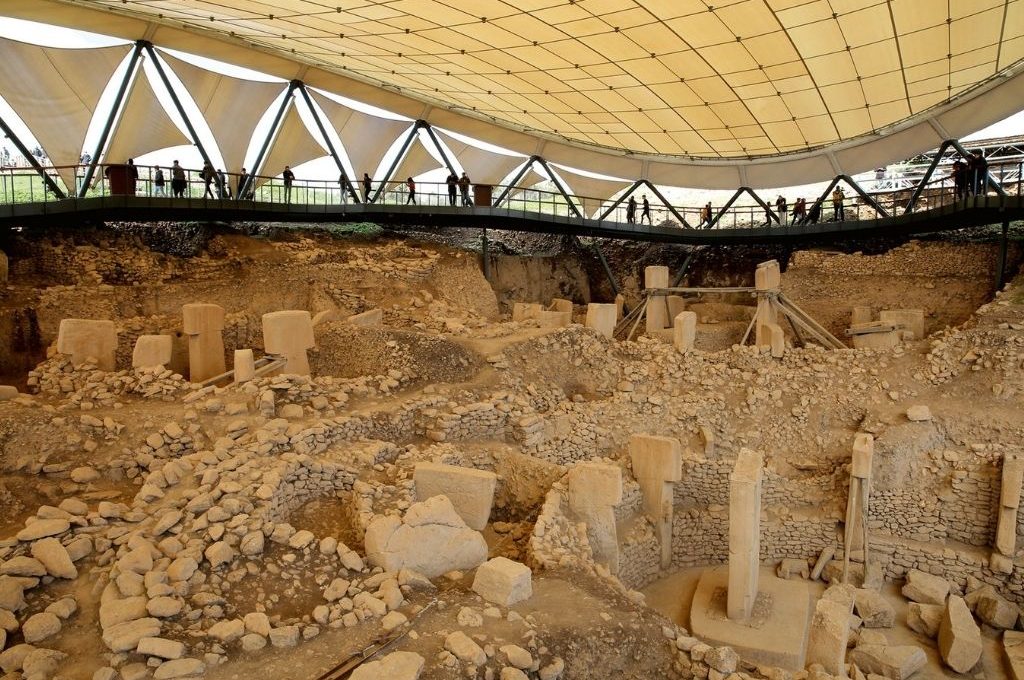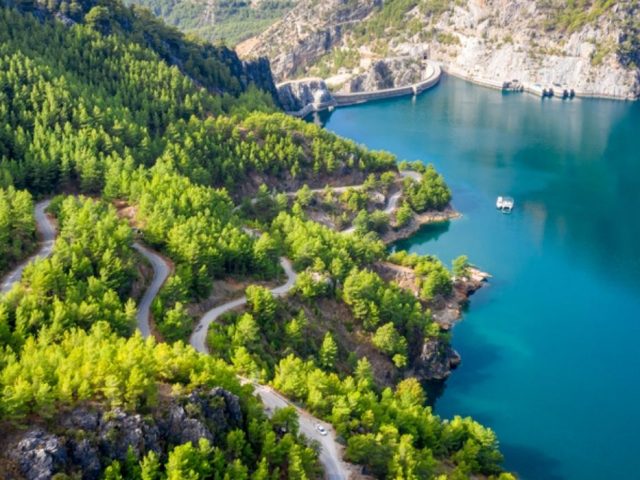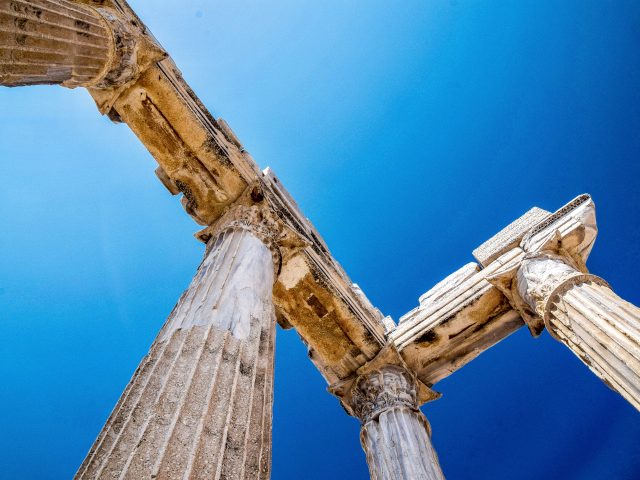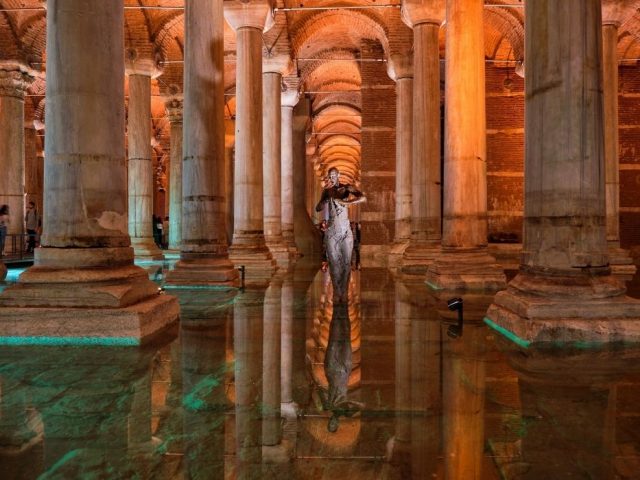Hello, fellow travelers! Today, we have an intriguing place to introduce to you, a place that might not even make sense to experts: Göbeklitepe. Imagine this – 12,000 years ago, in a land far from water sources, humans built a mound for settlement, and what’s more, they built it with their own hands! It truly boggles the mind, doesn’t it? This place is a game-changer in the history of humanity, and it happens to be the world’s oldest temple! Let’s take a closer look.
🛎️ Reminder: To explore the world with your digital tour guide, don’t forget to download Piri Guide! 😊
Where is Göbeklitepe?
Göbeklitepe is located near Örencik Village, just 18 kilometers away from the city center of Şanlıurfa. If you’re interested in exploring more of Şanlıurfa, you can click here to check out our Şanlıurfa Travel Guide.
How to Get to Göbeklitepe?
To reach Göbeklitepe, you’ll first need to make your way to Şanlıurfa, of course! For those who prefer air travel, you can land directly at Şanlıurfa GAP Airport. If you feel more comfortable on the road, you can take a bus to Şanlıurfa Bus Terminal or hit the highways with your own vehicle.
Once you’ve arrived in Şanlıurfa, you can hop on one of the Şanlıurfa Municipality buses at the Abide stop in the city center to get to Göbeklitepe. It’s that easy! Enjoy your journey to this amazing historical site!
When is the Best Time to Visit Göbeklitepe?
Planning your visit to Göbeklitepe? Great choice! Let’s talk about the best times to experience this incredible place.
Spring (April to June): This season is a real treat. The weather is mild, flowers are in full bloom, and the landscape is lush green. It’s perfect for exploring Göbeklitepe without the scorching summer heat.
Summer (July to September): If you can handle the heat, summer can be a good time to visit. Just remember to stay hydrated and wear sunscreen, as temperatures can soar. Early morning or late afternoon visits are more comfortable.
Autumn (October to November): Another fantastic time to explore Göbeklitepe. The weather is still pleasant, and you can enjoy the historical site without the crowds that summer brings.
Winter (December to March): While it can get chilly during the winter months, if you don’t mind bundling up a bit, you’ll have the advantage of fewer tourists. Plus, the unique atmosphere of Göbeklitepe in the winter has its own charm.
Ultimately, the best time to visit Göbeklitepe depends on your personal preferences. Each season offers a different perspective on this ancient wonder. So, choose the time that suits you best, and get ready for an unforgettable adventure!
Places to Visit in Göbeklitepe
We’ve made a list of must-visit places in Göbeklitepe. Yet, we should remind you that you can find more on the Piri Guide mobile app. Piri Guide detects your location, offers you the best travel routes, and starts telling you the hidden stories of wherever you are. All you have to do is to get your headphones or earbuds and follow the path at your own pace. Then, don’t set out for your trip before downloading the digital travel guide! 😊
Temples
The most distinctive feature shared by these temples is their T-shaped pillars. Whether they’re designed in a square or circular plan, you’ll find these towering pillars surrounding the area. At the center, two T-shaped pillars stand face-to-face. And if you take a closer look at these pillars, you’ll discover a multitude of intricate relief symbols adorning them.
Temple E
In this temple, you’ll come across numerous pits, big and small. The prevailing belief is that these pits were used for collecting water.
Temple C
This temple has seen its fair share of wear and tear. In fact, the two central pillars of the temple haven’t made it to us intact. With six wild boar reliefs and four wild boar statues, a journalist playfully nicknamed this place the “Temple of the Male Wild Boars.”
Temple D
This place is the largest temple in the region and has nearly made it to our time without any significant damage. It’s massive, with a diameter of approximately 20 meters. The central pillars? Well, they stand at an impressive height of about 5.5 meters and weigh a whopping 20 tons each!
Temple B
Temple B is a bit different from Temples C and D, still circular in design but with a diameter of approximately 10 meters, which is half the size of Temple D. The reliefs on the pillars here are more understated, in fact, many of the stones are left unadorned.
Temple A
Temple A offers a bit of a twist compared to the circular layout of the other temples. Since the excavation is not yet complete, the exact size and number of pillars are not set in stone. However, it’s clear that it follows a square plan, with approximate dimensions of 12 meters by 13 meters. When we compare it to Temple B, you’ll notice that the pillars here are slightly smaller in stature.
Temple F
Temple F is the last temple we’ll explore at Göbeklitepe, and it’s a unique one. It features a circular design, and what makes it stand out are these intriguing figurines placed between each T-shaped pillar. So far, no other temple with this kind of design has been unearthed, making it a truly fascinating and distinctive feature of Göbeklitepe!
Mulberry Tree
This isn’t your ordinary mulberry tree atop the hill. While it does offer a wonderful view from up there, that’s not the main attraction. This mulberry tree holds a special place in the hearts of many, as it has been considered a sacred “wishing tree” by people for a very long time. 🌳
Şanlıurfa Archaeology Museum
One of the most remarkable features of this museum is that it houses “unique” artifacts. Many museums around the world showcase incredible pieces from various periods, like those you might find at the British Museum in England or the Pergamon Museum in Germany. They are indeed spectacular, but what sets this museum apart is the distinctiveness of its collection. The pieces here have a unique thematic and artistic interpretation that makes them truly one-of-a-kind.
If you’re curious about the visiting hours of the Şanlıurfa Archaeology Museum, you can click here.




